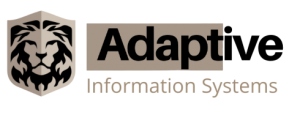In today’s fast-paced and competitive business environment, keeping your organization running and maintaining service levels is critical to success. As a result, any unplanned downtime can have disastrous consequences for organizations, regardless of their industry. A disaster such as fire, flood, or power outage affecting your premises or, often more crucially, affecting the datacenter which houses your IT systems, could have catastrophic impact on your business, ranging from immediate loss of revenue to long-term loss of customer confidence.
A robust Disaster Recovery (DR) plan is therefore essential in ensuring that your organization will be able to cope with the effects of a disaster should it occur, and should be a key foundation of your business strategy. Such a plan would define exactly what you will do to keep your business running should a disaster strike, detailing everything from office re-location to customer communications. In the modern world, a critical element of the plan will naturally be how your IT systems keep functioning and serving your staff and your customers for the duration of the disaster.
When your IT is hosted entirely on your own premises, there is little you can do to mitigate the effects of a disaster striking those premises. The only guaranteed way to ensure that your systems continue working when a disaster knocks out your primary site is to duplicate those systems in an alternate location.
Of course this implies that you will need access to a second datacenter where you can replicate your entire server infrastructure. But building your own secondary datacenter and provisioning a disaster recovery solution is extremely labor intensive and CAPEX heavy. Additionally, you may not have the skills in house, and recruiting contractors can be problematic and expensive. By engaging a third party to implement and manage the disaster recovery solution you can remove those challenges and convert CAPEX to OPEX. This is why more organizations are turning to third-party datacenters and hosting providers to provide disaster recovery services.
Our Disaster Recovery solution
We have the processes in place to provide you with a complete disaster recovery solution for your IT systems, providing you with easily integrated, simply controlled, low-risk solutions delivering disaster recovery environments that have low maintenance costs which your business can quickly switch over to in the event of a disaster. Our backup and disaster recovery solutions allow us to host your primary IT on- site and keep your disaster recovery systems in a geographically-separated location, well away from the effect of any localized disaster that might strike.
Our Disaster Recovery services are being used by many companies and are based on proven best-in-class technologies. They require the minimum of input to implement and support, enabling you to keep focus on your business-as-usual tasks.
With our Disaster Recovery services, you would have an exact mirror of your live systems, including all data, hosted in a second site, so that should your primary site fail the secondary DR site will become active and take over operations.
Recovery Time and Recovery Point Objective (RTO and RPO)
The transition from primary to DR infrastructure at the moment a disaster strikes needs to be as seamless as possible, to make the downtime as short as possible. Two measures you should look at when evaluating DR services are “Recovery Time Objective” (RTO) and “Recovery Point Objective” (RPO).
RTO specifies the amount of time taken from you invoking a DR to you having your services up and running in the DR site. For mission-critical services, you want this to be as short as possible, as any downtime will cost you money. Different DR designs will offer different RTO times. For example, “cold standby” systems have copies of your servers stored in the remote site but powered off until they are needed. These systems have poor RTO times, as they must be powered up, often manually, and your most recent data backups must be restored to them before they can take over as your primary systems. At the other end of the scale, “hot standby” systems are always up and running in the secondary datacenter and are constantly updated with live data. Obviously hot standby systems will give you a much shorter RTO.
RPO specifies the “age” of the data that is stored on the DR site. It is physically impossible for data to be instantly replicated between different sites, therefore your DR systems will be recovered with data that is out of date to some degree. For example, if your data is copied across once per day, at midnight, then DR systems that are activated at 10am will have data that is 10 hours out of date. For relatively static systems such as a web site, this may not be an issue. For more dynamic systems, such as transactional databases updated constantly around the clock, the RPO needs to be as short as possible to minimize data loss. For these systems, simple overnight backups are not sufficient and you will want real-time mirroring of live data.
Short RTO and RPO times obviously come at a cost: hot standby servers and real-time data replication consume data center and network resources and require human resources to provide the necessary management and monitoring of the systems. But DR services should be considered as insurance policies, where the premium you pay is small in comparison to the money you would lose if a disaster struck and you didn’t have insurance. And as with insurance, you need to balance what you are willing to pay for to mitigate the risks of data loss.
Arrangements must be made to allow people to continue working if a disaster strikes their office. This is called workplace recovery and should form a part of any comprehensive DR plan.
Adaptive Information Systems was founded with the mission to help businesses get the most out of their technology investments. We provide IT help desk support in Monterey and the surrounding areas , we are ready to manage your IT needs so you can focus on running your business.
831-644-0300

